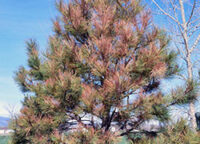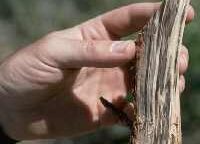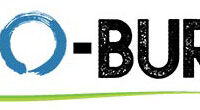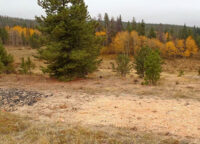- 08, 11, 2015
- No Comments.
- By
Mountain Pine Beetle – 5.528
Print this fact sheet by D.A. Leatherman, I. Aguayo, and T.M. Mehall* (9/11) Quick Facts… Mountain pine beetles (MPB) are the most important insect pest of Colorado’s pine forests. MPB often kill large numbers of trees annually during outbreaks. Trees that are not growing vigorously due to old age, crowding, poor growing conditions, drought, fire […]
Take a Tour- 08, 11, 2015
- No Comments.
- By
White Pine Weevil – 5.606
Print this fact sheet by W. Cranshaw* (12/12) Quick Facts… Injury by white pine weevil is almost entirely limited to higher elevation areas of the state and foothill areas. The standard approach to manage white pine weevil is to spray insecticides in spring. A closely related species, Pissodes terminalis, causes similar injury to lodgepole pine […]
Take a Tour- 08, 11, 2015
- No Comments.
- By
Ips Beetles – 5.558
Print this fact sheet by W. Cranshaw and D.A. Leatherman* (6/13) Quick Facts… Ips is a common group of bark beetles that infests pine and spruce trees. Ips beetles rarely attack healthy trees. Most problems with ips occur to newly transplanted pines or when plants are under stress. Several generations of ips can occur in […]
Take a Tour- 08, 03, 2015
- No Comments.
- By admin
Winter Drying is a Likely Cause of Brown Pine Needles
Bill Ciesla Colorado State University Extension Master Gardener in Larimer County April 5, 2015 During the past winter, the needles of many pines growing in Fort Collins and surrounding communities have turned a sickly red-brown color. While several factors may be involved, a likely cause of the discoloration is a condition known as winter drying. […]
Take a Tour- 07, 27, 2015
- No Comments.
- By
Lady Beetles – 5.594
Print this fact sheet by W.S. Cranshaw * (7/14) Quick Facts… About 80 different species of lady beetles (a.k.a., “ladybugs” and “ladybirds”) are present in Colorado. Adults and larvae feed on a variety of pest insects and mites, notably aphids and scales. Lady beetles can be invited into a garden by providing plants that adults […]
Take a Tour- 07, 10, 2015
- No Comments.
- By
Pinyon Pine Diseases and Insects – 2.948
Print this fact sheet by W.R. Jacobi and W.S. Cranshaw * (12/14) Quick Facts… Pinyon pines are well-suited to many parts of Colorado. These pines make good visual screens, windbreaks, and wildlife habitat. Major diseases include black stain root disease, dwarf mistletoe, armillaria root disease, and pinyon decline. Common insect pests are pinyon pitch mass […]
Take a Tour- 07, 10, 2015
- No Comments.
- By
Pine Wilt Disease – 2.915
Print this fact sheet by D. Atkins, T.S. Davis and J.E. Stewart* (5/20) Quick Facts… Pine wilt is a lethal disease caused by a native nematode (Bursaphelenchus xylophilus), vectored to trees by a wood borer insect–the pine sawyer beetle (Monochamus spp.). Exotic pines including Scots, Austrian, and mugo are susceptible to infection by the nematode. Some […]
Take a Tour- 01, 09, 2023
- Comments Off on CO-BURN: Colorado Biochar Use Resource Network
- By Beren Goguen
CO-BURN: Colorado Biochar Use Resource Network
CO-BURN is your source for information surrounding biochar topics in Colorado, including biochar production and usage. CO-BURN exists to provide helpful, current information to land owners and professionals working in fields such as forestry, agriculture, agronomy, horticulture, biofuels, carbon management, environmental health, and more. What is Biochar? Biochar is an organic soil amendment currently being […]
Take a Tour- 01, 20, 2016
- Comments Off on Biochar in Colorado – 0.509
- By admin
Biochar in Colorado – 0.509
Print this fact sheet by M. Ramlow, C.M.H. Keske, M.F. Cotrufo* (1/16) Quick Facts Biochar shows promise for a variety of applications — such as utilizing residues from overcrowded and beetle- infested forests, storing carbon in soils, soil reclamation and mining remediation, and a soil amendment for gardening — but continued research is necessary to […]
Take a Tour- 07, 09, 2015
- No Comments.
- By admin
Mistletoes in Colorado Conifers – 2.925
Print this fact sheet by R.D. Koski, W.R. Jacobi and C.E. Swift * (12/13) Quick Facts… Mistletoes are parasitic flowering plants that can infect and damage many tree species. Dwarf mistletoes (Arceuthobium spp.) are leafless parasitic plants that infect several coniferous or evergreen tree species in many western states. Ponderosa, lodgepole, limber, and pinyon pines […]
Take a Tour












